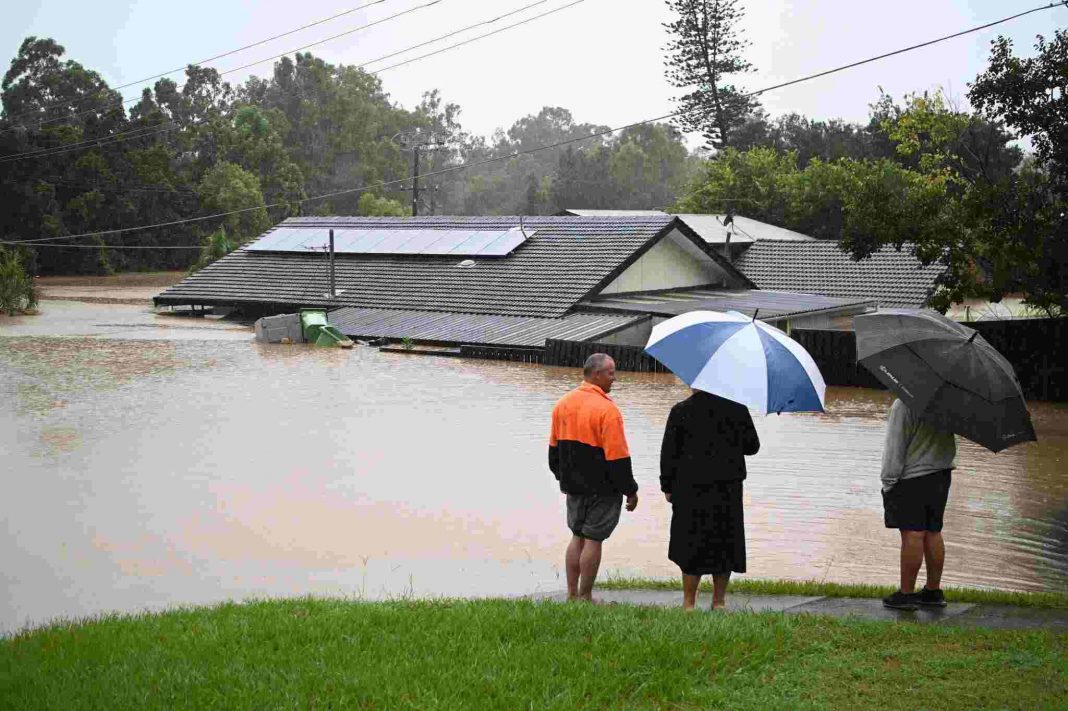At least eight people have died as a result of the flash flooding that has wracked northeastern Australia over the last several days. Residents were forced to flee and schools were closed, and thousands of houses have been swamped as a result.
With heavy rain pummeling towns and cities throughout Queensland and steadily creeping southward to cover the state’s capital, Brisbane, the state has been hammered particularly hard.
Brisbane River was considerably swollen and several streets were seriously flooded on Monday morning, according to photographs and videos taken across the city. Roads, houses, and automobiles were all extensively damaged as a result of the torrential rain. Normally crowded thoroughfares were inundated in the floodwaters.
According to the authorities, up to 18,000 residences throughout the state have been impacted, with around 15,000 of them located in Brisbane. On Monday morning, more than 1,000 people had been evacuated, and over 53,000 residences were without electricity, according to preliminary estimates. Hundreds of schools have been shuttered, and citizens have been urged to work from home by authorities.
The rain had subsided by Monday morning, and the Brisbane River had reached a record high of 12.6 feet. It was predicted to reach its highest point again in the afternoon.
Most of the heavy rain is going south to New South Wales, where the town of Lismore is witnessing the worst flooding it has ever seen in its history. Stormy weather on Sunday night took officials off surprise and gave people little time to flee, with many being stuck on rooftops as floods surged swiftly.
Because the emergency services are overburdened, some people have gone to social media to plead for assistance. Officials anticipate that the town’s river will reach a high of around 46 feet on Monday afternoon.
The country of Australia has been battered by exceptionally severe weather over the last several years, including devastating bushfires, prolonged drought, and extensive floods.
Extreme weather has been a feature of the nation for millennia, according to scientists, which has a landmass as huge as the continental United States and is bordered by climate-changing waters. These have included terrible droughts that have culminated in massive floods. The chance of extreme downpours is growing, despite the fact that some of the causes causing such fluctuations are timeless.
Queensland’s state leader, Annastacia Palaszczuk, characterised the latest disaster as a “rain bomb” on Sunday, according to the Brisbane Times.
Ms. Palaszczuk likened the weather to a “unpredictable cyclone” and said that the authorities had not anticipated the storm system to linger over the state for such a lengthy period of time, according to the media.
According to the authorities, seven of the eight persons who have died since Wednesday were from the state of Queensland, while one was from the state of New South Wales.
Another victim was a guy in his 59s who was washed away by floods while crossing a road on Sunday afternoon in Brisbane, according to the media. Other victims include a 34-year-old Brisbane man who died on Sunday morning while attempting to escape his waterlogged automobile and a volunteer rescue worker who died when her vehicle was swept away when she was on her way to assist a family who had been stranded by the floods on Saturday.
Boats, including kayaks, have been used by some locals as a mode of transportation, and video of one individual swimming in an inundated baseball stadium has gained widespread attention on social media, despite the fact that the authorities have encouraged citizens to keep out of the water.
Gympie, where two people died as a result of floods, saw its worst flooding since 1893.
On Sunday, beaches along the Gold Coast, which is near Brisbane, and the Sunshine Coast, which is north of the city — both of which are well-known holiday destinations — were closed due to extreme surf conditions.
The last time Queensland saw comparable devastating floods was in 2011, when severe rain poured over a period of many weeks, resulting in the deaths of 33 people. More than 200,000 individuals were impacted by the accident, which resulted in billions of dollars in damage.

